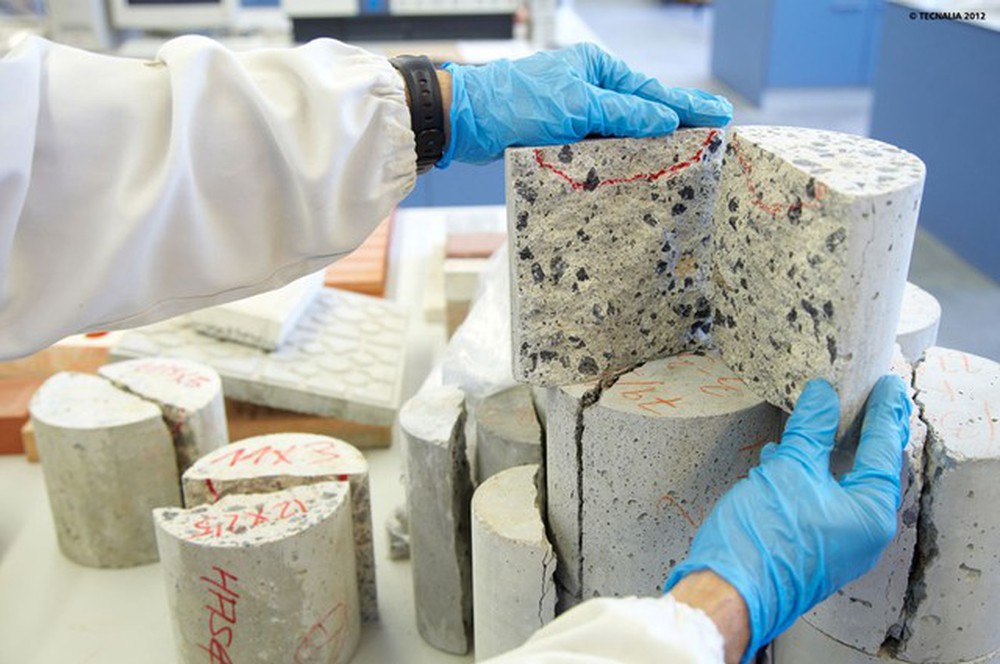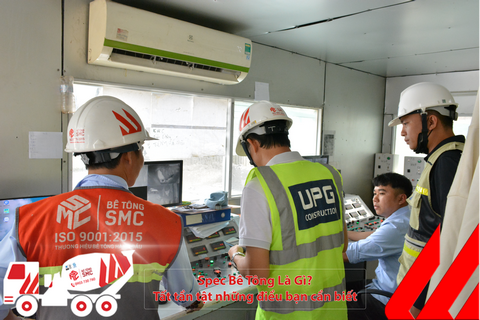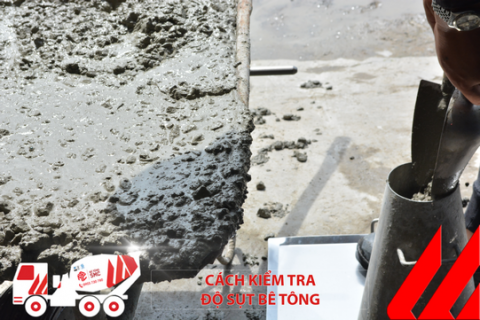Frequently asked Questions
Concrete engineering advice
Business contact
Simple things you may not know about Concrete
1. Origin of concreteConcrete is an artificial material made up of many different materials such as cement, sand, stone, water, lime ... However, it is only true of modern concrete, whereas, concrete The tone has a long origin. According to archaeological studies about two thousand years ago, the Romans knew how to use volcanic ash mixed with water as a "special concrete" in the creation of later century works, the most typical. is the Colosseum in Rome. This is the first "concrete" form of mankind.
So why can volcanic ash make such magical material? Archaeologists have discovered that puzzolan (from volcanoes) is a mixture of silicon dioxide (SiO 2 ), abundant in sand, and quicklime (CaO) - two of the three main components of concrete before cement. appear. Immediately, the archaeologists turned to Stanford geologists to study the Campi Flegrei crater area.
A team of researchers, after collecting enough data, discovered that the crater has a lot of limestone (CaCO 3 ), under the extreme heat of this area, a basic chemical reaction happened: CaCO 3 → CaO + CO 2
When a volcano erupts, the CaO layer will accumulate for a long time in the air and fly away. Many large patches will fly to the coast not far away and mixed with sea sand, the craftsmen at Pozzuoli discovered them and they happened to realize that wet patches could become extremely solid. probably when they were dried in the sun. Concrete has such origin.
2. Typical modern concrete types
After the fall of the Roman Empire, the idea that pozzolana could disappear forever, in 1824, Joseph Aspdin formally created Portland cement - laying the foundation for modern concrete. By burning limestone and silicon-rich clay under 600 degrees Celsius, Joseph Aspdin created calcium silicate (Ca 2 SiO 4 ) the same way Campi Flegrei volcano did.
With the arrival of portland cement, the construction industry really changed after the 40s of the 19th century. Even, experts have created many different types of concrete to fit the purpose of use. Specifically. The following are the most typical modern concrete types:
• Reinforced concrete
Reinforced concrete is a kind of construction material combining two types of materials, concrete and steel. This combination brings many outstanding advantages for reinforced concrete. Steel and concrete have approximately the same coefficient of thermal expansion, thus avoiding the influence of the increase or decrease in ambient temperature.
Concrete protects reinforcement from environmental erosion, concrete positioning steel to avoid cracking. Concrete has poor tensile and bending properties, when reinforced, this disadvantage will be overcome because steel is a good tensile material. In most current buildings, reinforced concrete acts as the main bearing structure for the whole project.
• Absorbent concrete
Absorbent concrete with outstanding advantages such as reducing rainwater pollution, protecting groundwater is a new direction of environmentally friendly concrete technology. This new concrete technology is being developed by countries around the world, especially in countries where water pollution and environmental pollution have serious consequences.
The ability to permeate water through concrete while ensuring the intensity and longevity makes this concrete superior to traditional concrete. In the world, there have been some countries applying waterproof concrete into construction works such as roads, sidewalks, parking lots ... and have achieved high efficiency in terms of environment, economy, results. Structure, aesthetics.
• Nano concrete

Nanotechnology concrete - future construction materials.
Currently, concrete on the basis of cement binder is the most produced construction material in the world with about 5.2 billion cubic meters annually. In particular, the cement production process consumes a lot of energy, with the world's annual production of about 2.1 billion tons of cement equivalent to about 5% of global gas emissions.
In recent years, researchers have demonstrated that the use of nanomaterials as additives to building materials on the basis of cement binders has created robustness in transition areas making Their properties are markedly improved. With the use of nano powders and nanofibers as additives in concrete production, not only can the intensity of Ultra High Performance Concrete be increased dozens of times, but also many Other substances such as flow and adhesion (in self-compacting concrete, shotcrete, ready-mixed concrete), corrosion resistance or magnetic field barrier can be achieved.
• Biological concrete
Although concrete is of the "mortar pot" material, it still cannot win against the time when the works made of concrete will appear incurable cracks. Biologist Jonkers has proposed a type of concrete that can "heal" cracks on its own thanks to bacteria and rainwater.
Specifically, Bacillus or Sporosarcina bacteria will be hibernated and packaged in very small particles, similar to white powder, smooth and added to the concrete structure during construction. They will be packed with food called calcium lactate.
When cracks appear on the structure of the building, the micro pellets will burst, water enters and the bacteria are awakened. Then they begin to "eat food" already reserved. As a result, they will release hard limestone, fill cracks and prevent access to water destroying the structure of the building (water can cause the steel frame to rust).
According to Professor Jonkers, most works have a lifespan of about 20-30 years, this bacterium can sleep dormant for 200 years without food. Therefore, this method can extend the life of construction works by decades compared to normal.
3. Concrete - Option 1 for buildings
In recent times, people have started to look for materials to replace concrete, but before any idea becomes a reality, concrete is still the number one choice for constructions. According to the latest statistics, concrete is the most used artificial material in the world, even its consumption is greater than the consumption of plastic, steel and aluminum combined.
The downside of concrete is that at the end of its service life, constructions will generate an enormous amount of solid waste. But now, with the development of science, many technologies to regenerate concrete are being studied and applied.
Other news
Currently, ready-mix concrete is a top choice for many construction projects—both large and small—thanks to its convenience, consistent quality, and high construction efficiency. With extensive experience supplying commercial concrete for numerous key projects in the Southern region, SMC proudly offers a diverse range of ready-mix concrete products to meet the technical requirements of every type of construction.
A Comprehensive Guide to Concrete Specs – Everything You Need to Know
A Complete Guide to Concrete Specs – a set of technical parameters including concrete grade, slump, compressive strength, aggregate size, and mix ratio. This article helps you understand how to define, apply, and control concrete quality according to TCVN standards and practical construction conditions.
How to check the concrete slump
In construction and civil engineering, concrete slump test (or simple slump test) is the work performed at the construction site or in the laboratory that usually determines and measures the hardness, consistency of samples. Concrete before pouring concrete or casting maintenance, research or experiment samples.




